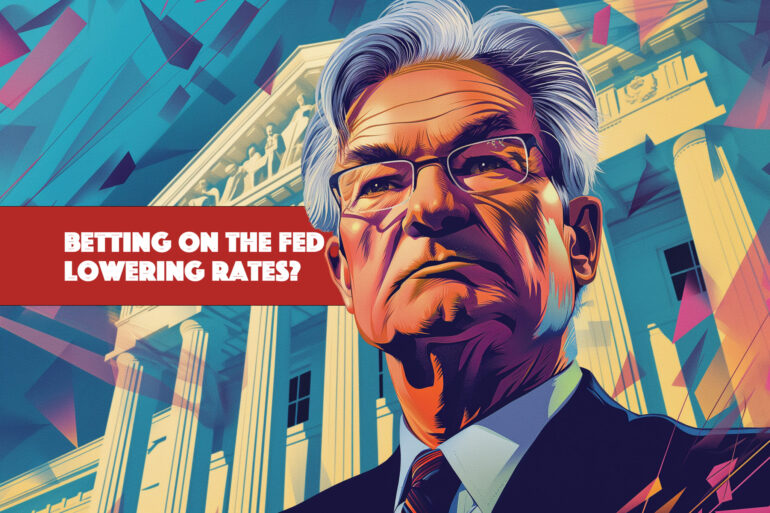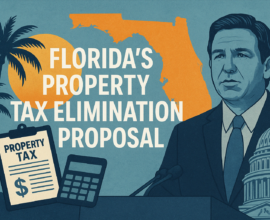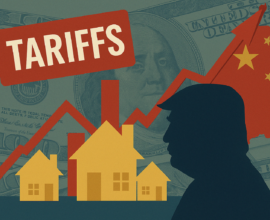Betting on the Fed Lowering Interest Rates in 2024?
If you’re a betting person, what odds would you give on the Fed lowering interest rates in 2024? To date, the Fed has indicated that it may cut interest rates three times this year, with each cut likely a quarter percentage point. After recent data, that outlook probably won’t happen. That indication helped the stock and bond markets to end 2023 with big rallies. However, as the Wall Street Journal points out, there was no timetable suggested for these potential rate cuts.
If the Fed follows through with its intended cuts, it’s a positive sign for real estate investors. However, somewhat lower interest rates do not necessarily mean a return to the strong seller’s market of just a few years ago, when properties sold within hours of hitting the market and bidding wars were the norm. The cuts might indicate a more balanced market, which benefits both buyers and sellers.
The Fed’s goal is a target inflation rate of 2 percent, and that is basically what is predicted until at least 2028.
Is Inflation Tamed?
Today’s higher interest rates are a result of the inflation we’ve all experienced since the pandemic. In 2021, inflation rose to 4.69 percent, then soared to 8 percent the following year. The Fed raised interest rates to combat high inflation, and its plan appears to be working. In 2023, inflation dropped to 4.5 percent. While still high, the projected annual inflation rate for 2024 is 2.3 percent, and for 2025, 2.1 percent. The Fed’s goal is a target inflation rate of 2 percent, and that is basically what is predicted until at least 2028.
Of course, national and international events could change that prediction. From 2010 to 2020, the inflation rate ranged from a high of 3.14 percent in 2011 to a low of just 0.12 percent in 2015. Keep in mind that lower inflation does not necessarily mean real estate prices will fall. They simply will not rise as fast. If inflation is tamed, mortgage rates will trend lower. However, the days of very cheap mortgages are unlikely to return.
There is still a lot of sticker shock when it comes to housing. In fact, it is primarily housing that is fanning inflation right now. Remember May 2021, when home prices were up 25.2 percent in the wake of the pandemic? In October 2023, home prices rose 3.4 percent from a year earlier, hitting an all-time record for that month. Housing and shelter make up 35 percent of the Consumer Price Index (CPI). Take housing out of the equation, and inflation in 2023 would have been just 1.4 percent.
It’s not uncommon to hear homeowners who locked in the lowest rates in mortgage history at 2.65 percent in January 2021 say they could not afford their home today.
Lower Interest Rates and Investors
A major issue affecting housing market supply is all of those homeowners enjoying historically low rates who aren’t moving because they don’t want to pay higher interest. As of January 4, 2024, a 30-year fixed-rate mortgage (FRM) is 6.62 percent, while a 15-year FRM is 5.89 percent. For the former, the 52-week range is 6.09 to 7.79 percent, and for the latter, the 52-week range is 5.14 to 7.03 percent.
Lower interest rates should increase housing inventory. While it is unlikely that the days of 3 percent interest rates will return, many homeowners who want to trade up or move to another area may decide they can live with a somewhat higher interest rate. A few hundred dollars more per month in a mortgage payment is a totally different scenario than paying $1,000 or more each month, which is the case with the current higher rates. Lower rates and more inventory mean more buyers, and investors, will enter the market.
Historic Interest Rates
It’s not uncommon to hear homeowners who locked in the lowest rates in mortgage history at 2.65 percent in January 2021 say they could not afford their home today. While those rates are a historical anomaly, today’s average mortgage rates are not that high compared to rates over the past half-century. In January 2000, the 30-year FRM was 8.15 percent. By 2003, the rate dropped to 5 percent. Five years later came the Great Recession. The housing market tanked, and the mortgage industry imploded. Foreclosures were rampant, as many people owed more on their mortgages than their homes were worth. The repercussions of the Great Recession are still reverberating 16 years later, as relatively little home building went on during this period.
While higher interest rates contributed to the downturn in CRE, they were far from the only factor.
Commercial Real Estate Investing
While residential real estate flourished in the COVID and post-COVID era, that’s not the case with commercial real estate (CRE). While higher interest rates contributed to the downturn in CRE, they were far from the only factor. The pandemic changed the way many people worked, and long commutes — at least of the five-days-a-week variety — became a thing of the past. Office space demand plummeted, vacancy rates rose significantly, and prices dropped accordingly. San Francisco, New York, and Los Angeles were the most affected. REITS declined significantly, and transaction volumes in CRE declined by a record 70 percent, according to Ernst and Young, now EY, one of the Big Four accounting firms.
Lower interest rates, as well as employers’ increasingly requiring that employees return to the office, could change that dynamic. National Association of Realtors Chief Economist Lawrence Yun believes CRE will revitalize and rates will stabilize, although office space remains problematic. High-interest rates are “hindering borrowing and making refinancing costly,” according to Yun. Lower rates will help, but CRE prices are falling below pre-pandemic levels and may continue to decline.
For investors, the office vacancy rate is a great concern. However, industrial rent growth is relatively strong. Speaking in late 2023, Yun said, “The Federal Reserve should consider cutting interest rates as we go into early next year. Then the ongoing weakness will stop, and we will begin to see some revival.”
The Bottom Line
After the past few years of high inflation, COVID, supply chain issues, and everything else we’ve dealt with since March 2020, the Fed’s decision regarding lower interest rates could mean real estate markets are returning to normal. Remember normal? For investors, that could mean steady but not over-the-top price appreciation. Much depends on whether the economy heads into recession or the Fed manages to achieve its much-vaunted “soft landing.”








